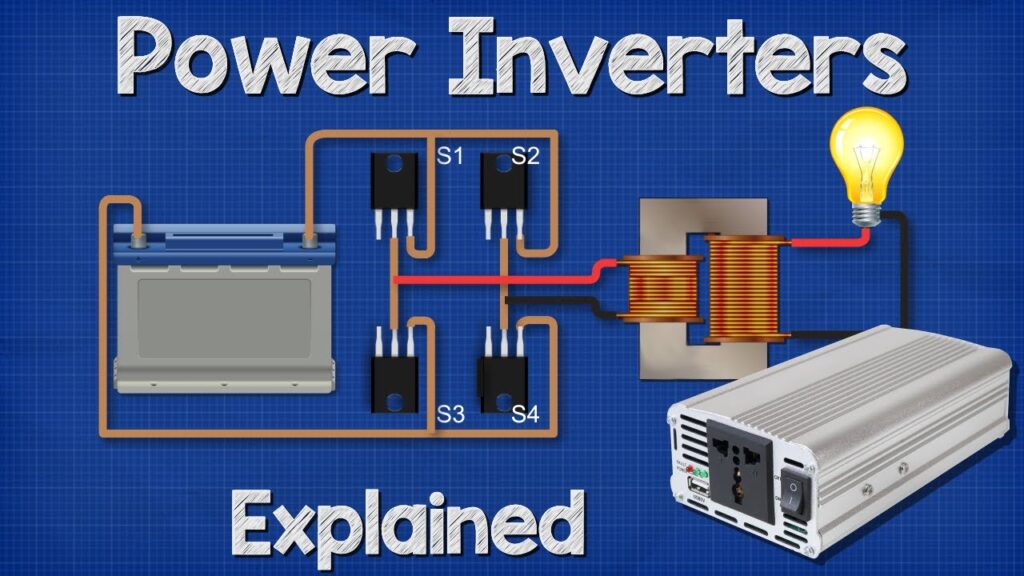How does an inverter work

An inverter is an essential device in modern electronics, used to convert direct current (DC) into alternating current (AC). In this article, we will delve into the working principle of inverters, exploring their components and operation. Understanding how an inverter works is crucial for various applications, including solar power systems, uninterruptible power supplies (UPS), and electric vehicles.
Inverter Components and Architecture
Inverters consist of several key components that work together to convert DC to AC. Let's explore each component in detail:
- DC Power Source: The DC power source is where the inverter receives its DC power. It can be a battery, solar panels, or any other DC power supply. The DC power source provides the initial input voltage to the inverter.
- Converter: The converter stage is responsible for preparing the DC input by regulating voltage and current levels. It ensures a stable input for the subsequent stages of the inverter. The converter may employ various control techniques, such as pulse width modulation (PWM), to efficiently manage the conversion process.
- Control Circuitry: The control circuitry manages the overall operation of the inverter. It monitors input voltage, output voltage, and other parameters to ensure the inverter functions optimally. The control circuitry also governs the switching of power electronic devices within the inverter.
- Power Electronic Devices: Power electronic devices, such as insulated gate bipolar transistors (IGBTs) or metal-oxide-semiconductor field-effect transistors (MOSFETs), are the key components responsible for converting DC to AC. These devices are capable of rapidly switching on and off, controlling the flow of current and voltage. They determine the frequency and shape of the output waveform.
- Output Filter: The output filter is an essential component that reduces harmonic distortion and filters out high-frequency noise from the output waveform. It ensures a clean AC output by smoothing the pulsating waveform generated during the conversion process. The output filter improves the quality of the output waveform, making it suitable for various applications.
Inverter Operation: DC to AC Conversion
The operation of an inverter involves a two-step process: the DC-to-DC conversion stage and the DC-to-AC conversion stage.
- DC-to-DC Conversion: During the DC-to-DC conversion stage, the DC power source supplies the initial input voltage to the inverter. The converter stage regulates and conditions this input voltage to match the requirements of the subsequent DC-to-AC conversion stage. It ensures that the input voltage remains stable and suitable for the inverter's operation.
Additionally, this stage manages the charging and discharging of the inverter's internal capacitor. The capacitor stores energy, allowing the inverter to provide a smooth and consistent AC output. The energy stored in the capacitor helps bridge the gap between the DC and AC power requirements.
- DC-to-AC Conversion: The DC-to-AC conversion stage is where the actual conversion from DC to AC takes place.
The control circuitry plays a crucial role in this stage by governing the switching of power electronic devices. These devices rapidly switch on and off, causing the DC input to be converted into a pulsating AC waveform. The frequency of these switching operations determines the output frequency of the AC waveform.
To obtain a clean AC output waveform, the pulsating waveform generated by the power electronic devices passes through the output filter. The output filter smoothes out the pulsations, reduces harmonic distortions, and filters out high-frequency noise. The result is a clean AC output with the desired frequency and voltage characteristics.
The output AC waveform can be modified to produce different types of AC output, such as sine waves or modified square waves, depending on the specific requirements of the application.
Conclusion
An inverter converts DC power into AC power by utilizing a combination of components, including a DC power source, converter, control circuitry, power electronic devices, and output filter. The DC-to-DC conversion stage prepares the input voltage, while the DC-to-AC conversion stage involves the switching of power electronic devices and the smoothing of the output waveform using an output filter. Understanding the operation of inverters is vital for various applications where AC power is required. By converting DC to AC, inverters enable the efficient and reliable operation of numerous electronic devices and renewable energy systems.
